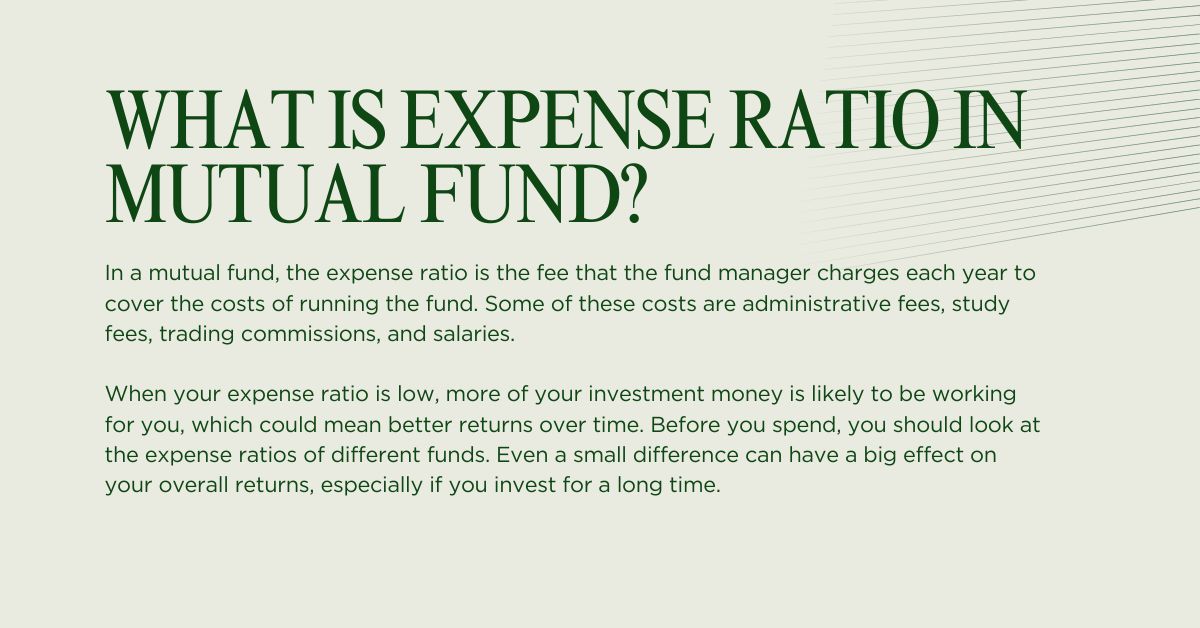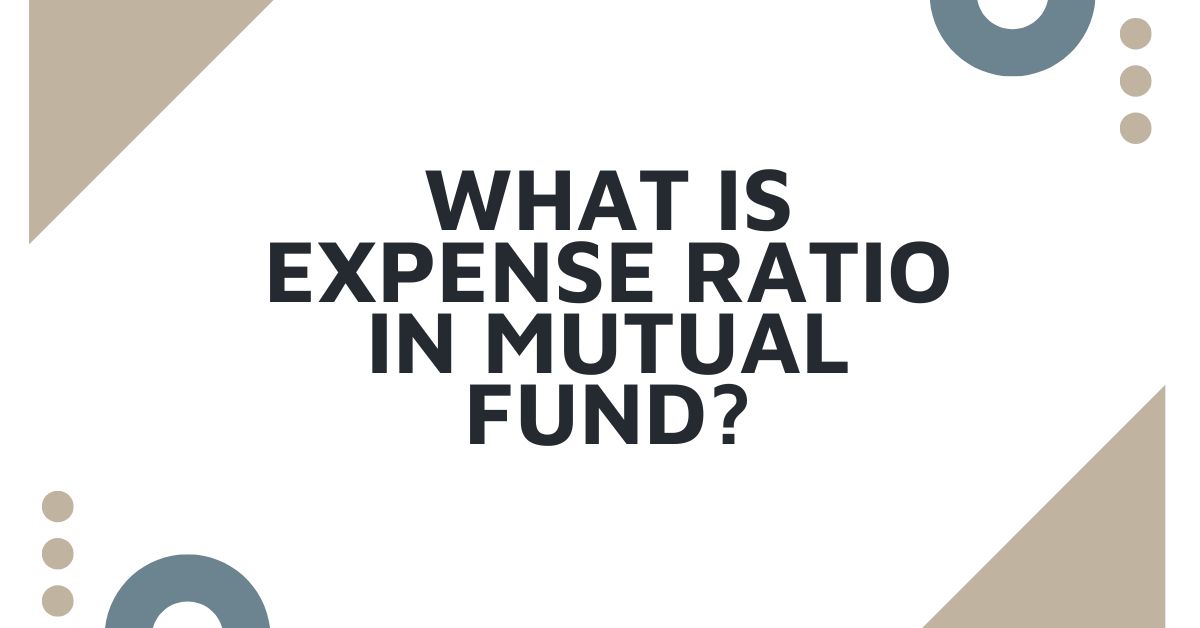In Mutual Funds (MFs), the expense ratio is a key measure that has a direct impact on your returns. In simple terms, it shows how much of your investment goes to the Asset Management Company (AMC) as a fee for handling your money.
You don’t have to pay this ratio separately; it is taken out of the value of your property every day. Knowing the parts of the Mutual Fund Expense Ratio, how it’s calculated, and what it means can help you make smart financial choices.
What is Expense Ratio in Mutual Fund?

In a mutual fund, the expense ratio is the fee that the fund manager charges each year to cover the costs of running the fund. Some of these costs are administrative fees, study fees, trading commissions, and salaries.
When your expense ratio is low, more of your investment money is likely to be working for you, which could mean better returns over time. Before you spend, you should look at the expense ratios of different funds. Even a small difference can have a big effect on your overall returns, especially if you invest for a long time.
What is Expense Ratio Formula?
The expense ratio of a mutual fund is calculated by dividing the fund’s annual operating expenses by its average net assets. The formula is as follows:
Expense Ratio = Annual Operating Expenses / Average Net Assets
What Are the Components of Expense Ratio?
The components of an expense ratio in a mutual fund typically include:
- Management fees: These are fees paid to the fund managers for their services in managing the fund’s investments.
- Administrative expenses: These include costs associated with running the fund, such as office rent, salaries for administrative staff, and legal fees.
- Trading expenses: These are costs incurred when the fund buys and sells securities.
- Research expenses: These are costs associated with analyzing and selecting investments for the fund.
- Custodial fees: These are fees paid to the custodian bank for holding the fund’s assets.
- Marketing and distribution expenses: These are costs associated with promoting the fund and distributing it to investors.
The specific components and their relative weights may vary depending on the type of fund and the fund manager’s investment strategy.
How Does Expense Ratio Work?
The expense ratio takes a certain amount of your investment’s value every year to cover the fund’s running costs. This is taken out immediately, so you don’t have to pay anything extra. If the expense ratio is high, more of your money is going to pay for the fund’s costs, which can lower your possible returns.
On the other hand, if the expense ratio is low, more of your money is being put in the underlying securities, which can help you make more money. When picking a mutual fund, the cost ratio is an important thing to think about because it can have a big effect on how well your investments do over time.
What is a Good Expense Ratio in Mutual Funds?
A good expense ratio for a mutual fund depends on a number of things, such as the type of fund, the investment plan of the fund manager, and your own investment goals. Most of the time, a lower cost ratio is better because it means that more of your money is working for you.
In order to get a sense of what is fair, it’s helpful to look at the expense ratios of different funds in the same category. A good rule of thumb is that expense ratios should be below 1%. However, this can change based on the precise situation. In the end, the best way to tell if a fund’s cost ratio is fair is to compare it to the expected returns and the overall performance of the fund.
Is the Expense Ratio Charged Every Day?
As of right now, the cost ratio is not charged every day. It’s usually worked out once a year and taken out of the fund’s net assets. This means that the cost ratio is used to figure out the net asset value (NAV) of the fund. The NAV is the price at which you can buy or sell fund shares. The spending ratio is a cost that comes up every day, but it isn’t taken out every day.
Is a Lower Expense Ratio Better?
Generally, yes, a lower expense ratio is better. A fee ratio that is lower means that less of your investment is going to pay for the fund’s running costs. This means you can put more of your money in the underlying securities, which might give you better returns over time. It’s important to remember, though, that a low cost ratio doesn’t always mean high returns.
Other things, like how good the fund manager is at investing and how the market is doing in general, also have a big impact on how well the fund does.
Can Expense Ratio Be Zero?
Yes, it is possible for the cost ratio of a mutual fund to be zero. This often happens with index funds, which follow a certain market measure like the S&P 500. Because these funds don’t need to be actively managed, they have lower costs to run. They just buy and hold the same securities as the index they follow instead.
The fund manager’s fees and other costs can be much lower as a result, sometimes even going down to zero. It’s important to remember, though, that just because a fund has no expenses doesn’t mean it will do better than other funds. It will still have an effect on the fund’s returns and how well the index it follows does overall.

